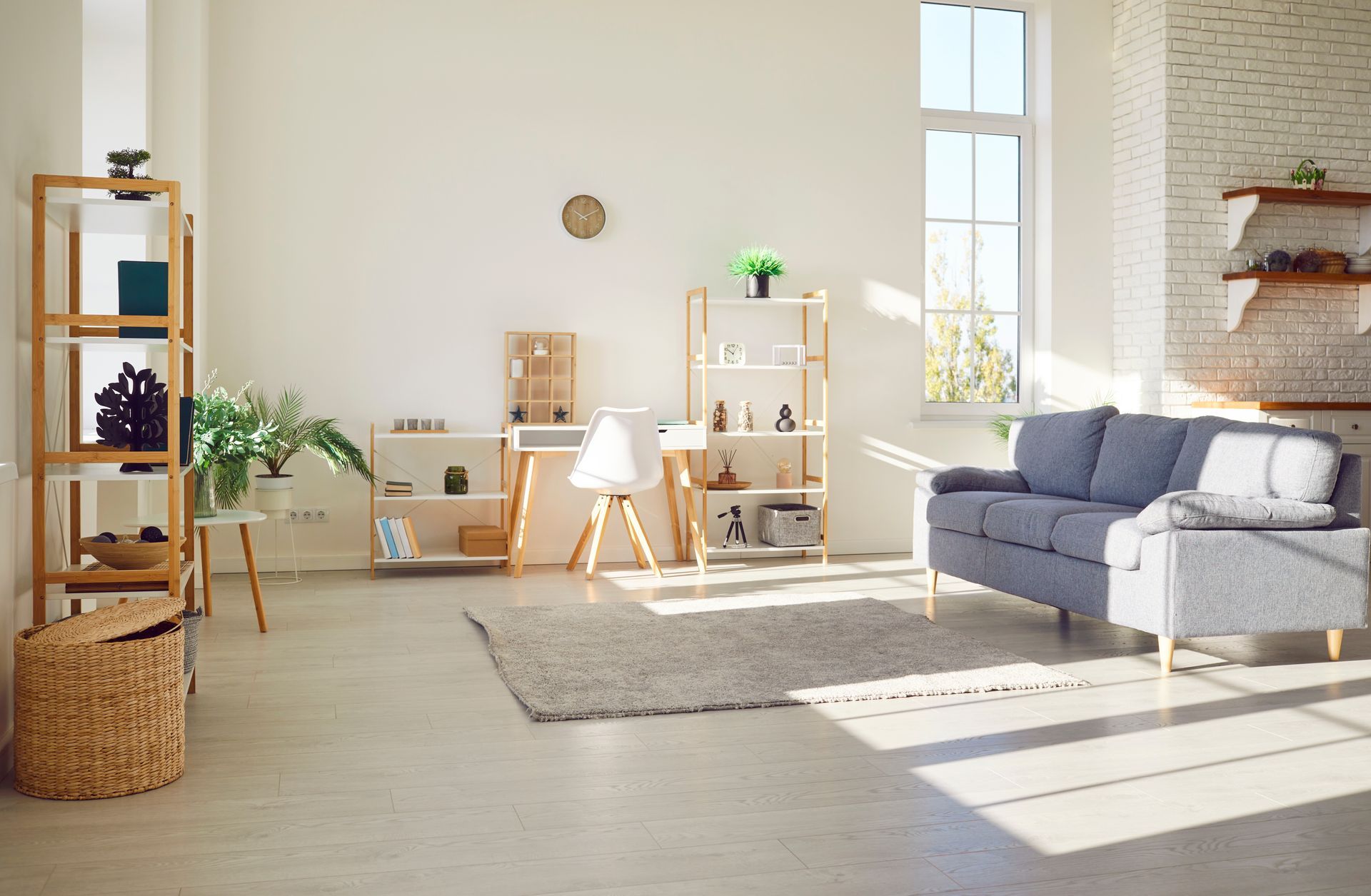Dorm vs Apartment: Choosing Which is Right For You
Share this Article:
Written by: Weida Apartments

The number of students enrolled at U.S. colleges and universities exceeded 20 million during the 2022-2023 academic year. While freshmen typically live in dormitories when they arrive at Purdue, many quickly look for off-campus apartment availability. That’s largely because living on campus does not necessarily provide an environment conducive to successfully completing a four-year degree. The notion of being immersed in college dorms might not be appealing for master’s degree and PhD candidates.
Since the pandemic, an increased number of college students have migrated from dormitories to apartment buildings designed to accommodate their needs. If you are planning to attend college or are currently earning a degree, considering a dorm vs. apartment analysis may be worthwhile.
Pros & Cons of Living in a Dorm
There are certainly benefits to living in college dormitories when young men and women first arrive. Your classes are often conveniently located within walking distance, and you have an opportunity to make friends with peers who are also living on campus. Building a social group makes a significant difference in terms of getting acclimated and enjoying college life. These are other benefits living in the dorms may provide.
- Close to the College Cafeteria
- Do Not Need Transportation
- Single Dorm Rooms Offer Privacy
- Access to Laundromats
- Fewer Housekeeping Chores
- Convenient Access to University Libraries & Other Facilities
Dorm life has a variety of facets that can help first-year students thrive. By that same token, the negatives tend to send freshmen looking for off-campus housing before they enter their sophomore year. These include the following.
- Double Dorm Rooms Eliminate Personal Privacy
- Communal Areas Tend to be Crowded & Noisy
- Studying in a Dorm Room Isn’t Always an Option
- Sharing Bathroom and Shower Facilities Can be Unpleasant
- Not All Students Clean Up After Themselves
- Cafeteria Meal Options Lack Diversity and Flavor
It’s also essential to note that colleges and universities place restrictions on people living in their dorms. These may include curfews, guest limitations, and not allowing certain items in the facility. Truth be told, living on campus requires young adults to forego certain freedoms and be managed as if they were minors living with their parents.
Pros & Cons of Living in an Apartment in College
The shift away from on-campus life to private living spaces continues to grow. In 2023, developers poured an estimated $5.7 into building off-campus facilities to meet growing demand. The trend is driven by the fact that living in an apartment designed to foster the needs of college students delivers a wide variety of positives. These include the following.
- Increased Privacy and Single-Person Bedrooms
- Place to Quietly Study for Exams and Write Essays
- Outdoor Communal Spaces to Gather, Grill and Bond
- Kitchens and Large Refrigerators to Prepare Meals and Snacks
- Private Bathrooms or Ones Shared Only With Immediate Roommates
- Place to Host Study Groups and Game Nights
- No Curfews or Restrictions
- Access to Nearby Restaurants and Businesses

Living in an apartment while attending college gives young adults an opportunity to conduct themselves freely. Those who opt out of dorms learn how to manage their time, maintain a living space, and get to class in a way that mirrors a career. However, there are a few things that can make off-campus housing a challenge.
- Apartment Life Generally Requires Reliable Transportation
- Not Every Young Adult is Ready to Live Without Restrictions
- Failing to Pay Rent or Utilities Can Damage Credit Scores
In many ways, transitioning from the dorm to an apartment allows college students to learn invaluable life lessons, including independence, time management, hygiene, and fiscal responsibility.
Dorm vs Apartment: What are the Key Differences?
The conventional thinking surrounding the dorm vs apartment life discussion tends to circle back to cost. It’s not uncommon for decision-makers to believe dorms are far less expensive, at least at first blush. But a deep dive into a dorm vs apartment cost analysis paints a different picture.
Monthly Rental Fees & Utilities
Reports indicate the expense of on-campus room and board hovers around $12,000, with utilities included. By contrast, living in an apartment typically costs about $17,000, also with utilities included. If one were to look no further, it would be easy to conclude residing in the dorms saves families money. Such is not necessarily the case.
One often overlooked caveat concerns time spent in a housing facility. Dormitories are usually 9-month rentals, while apartments generally require a 12-month lease. If we do the math, dorms cost $1,333 per month, compared to apartments that cost $1,416 per month. At the end of the day, we’re looking at a difference of under $100. Naturally, the person living in the dorm must travel home to their parents or pay for a 3-month rental during summer break
Food & Meal Expenses
Having a cafeteria within walking distance is a convenient way to get a no-hassle hot meal. Living in an apartment means students will have to prepare simple meals, snacks, and sometimes delicious dinners. Paying for prepared meals in a cafeteria or restaurant comes at a premium. The ability to establish a weekly grocery budget and shop for healthy favorites saves college students money.
Socialization Benefits
Living in the dorms during freshmen year helps students make new friends because they are immersed in the campus. During your second year, most people have a group of friends. Moving off-campus provides a place where everyone can gather. It’s also an opportunity to rent a multi-bedroom apartment and split the cost.
Starting your post-secondary education in the dormitory has worthwhile socialization benefits. However, the overall cost, lack of privacy, conditions, and restrictions generally give apartments a better quality of life and are cost-effective solutions.
When Do Students Typically Move Into Apartments?

College students usually look for off-campus apartments before starting sophomore year. Those wishing to start the next term living off campus typically begin filing applications in April and May. The timing coincides with seniors graduating and moving on to their careers. But it's not unusual for those who miss their window to reapply at select off-campus apartments in October and November. Some hope to find a vacancy or get ahead for the following academic year.
Tips for Deciding Between Dorms & Apartments
Choosing between dorms and apartments is an important decision for college students. Here are five practical tips to help you decide:
1. Calculate the Total Cost:
Compare the total cost of living in a dorm versus an apartment. Factor in rent, utilities, groceries, and additional expenses such as commuting. Remember to consider the duration of the lease and the potential need for summer housing.
2. Evaluate the Level of Independence:
Consider how much independence you want. Dorms often have more rules and structured living environments, while apartments offer more freedom and responsibility. Think about whether you're ready to manage your own household tasks, such as cooking and cleaning.
3. Assess Proximity to Campus and Amenities:
Consider the distance to your classes, campus facilities, and amenities such as grocery stores and gyms. Dorms are typically closer to campus, which can save time and transportation costs. Apartments might offer more variety in location and proximity to city life or off-campus activities.
4. Determine Your Social and Privacy Needs:
Reflect on your preference for social interaction versus privacy. Dorms often provide a built-in social network and opportunities to meet new people, while apartments can offer more private, quiet spaces for studying and relaxation.
5. Consider Safety and Security:
Assess the safety and security features of both options. Dorms usually have security measures like key card access and on-site staff, while apartments vary in their security offerings. Consider factors like neighborhood safety, building security, and emergency procedures.
Take your time to consider these factors, and make a decision that best suits your unique situation and preferences.
Weida is Here to Help Purdue Students Find Their Perfect First Apartment
Weida Apartments is locally owned and operated by Purdue Alumni. The majority of the staff at Weida are Purdue University graduates, and we’re here to support our fellow Boilermakers throughout their college journey. If you are interested in renting an apartment near Purdue University,
contact Weida. Let’s get the process started.
Share with Us!










